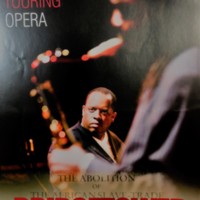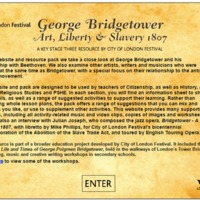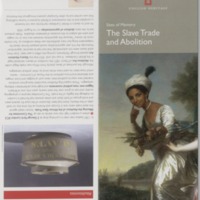
Bridgetower - A Fable of 1807
Bridgetower - A Fable of 1807 is a jazz opera composed by jazz pianist Julian Joseph, with libretto by author Mike Phillips. It was commissioned for the City of London Festival's bicentennial commemoration of the Abolition Act. The opera recreates the story of the Afro-European violinist George Polgreen Bridgetower (1778-1860), who was born into slavery, became a friend of Beethoven and was acclaimed throughout Europe for the standard of his playing. The opera was directed by Helen Eastman and toured by English Touring Opera. It opened during the 2007 City of London Festival at London Symphony Orchestra St Luke's, and later toured venues around the UK. Each performance featured a local community choir, with members drawn from local amateur choirs.

George Bridgetower: Art, Liberty and Slavery 1807
In this website and Key Stage 3 Resource Pack, the City of London Festival examined the work of the Afro-European violinist George Bridgetower (1778-1860) and, in particular, his relationship with the composer Ludwig van Beethoven. The resource also explored the role of other artists, writers and musicians who were active at the same time as Bridgetower, with a special focus on their relationships to the anti-slavery movement. The website provided music, video clips and worksheets, alongside an interview with Julian Joseph, composer of the jazz opera Bridgetower - A Fable of 1807, toured by English Touring Opera. The resource was part of a broader education project developed by City of London Festival, which included the exhibition, 1807: The Life and Times of George Polgreen Bridgetower, held in the walkways of London's Tower Bridge. The education project also included storytelling, music and creative writing workshops in secondary schools.

Sites of Memory: The Slave Trade and Abolition
The Sites of Memory project was the first research by English Heritage (now Historic England) to provide an overview for the public of the buildings, memorials and grave sites across England that reflects the role of the slave trade in British history, and resistance to it. The project explored the history of Black people in Britain during the 18th and 19th centuries by exploring the stories behind the historic built environment of local streets, buildings and landmarks. The research (by historians Angelina Osborne and S. I. Martin, on behalf of English Heritage) also identified sites associated with the slave trade and plantation wealth, and with the abolitionists who campaigned for an end to slavery. English Heritage also made recommendations for new listings for historic sites that mark the Black presence.